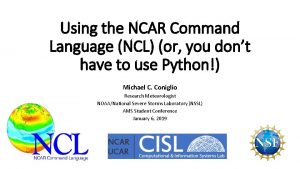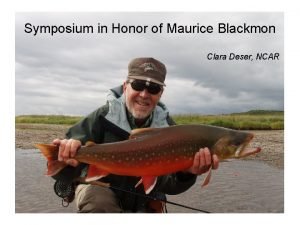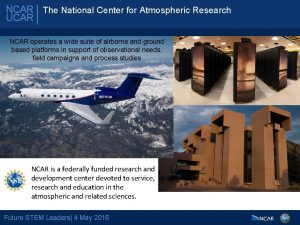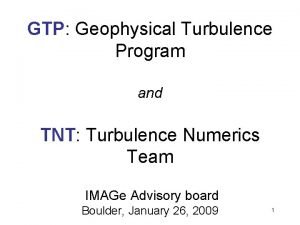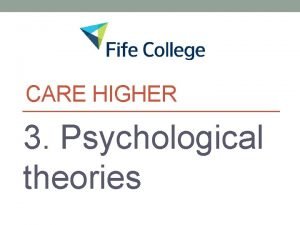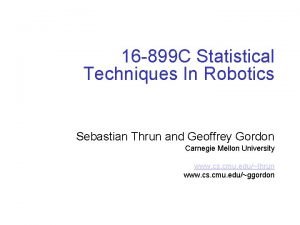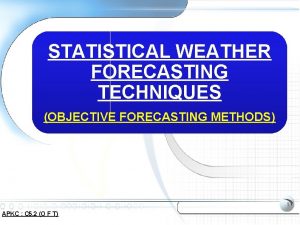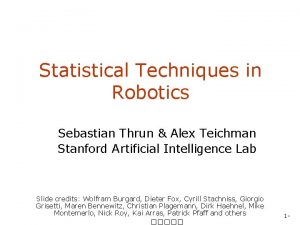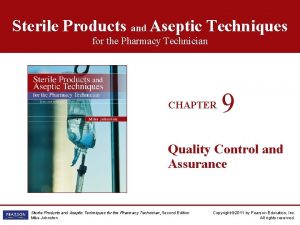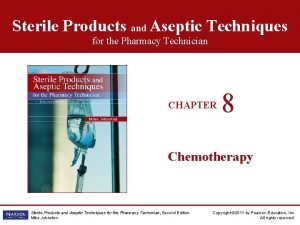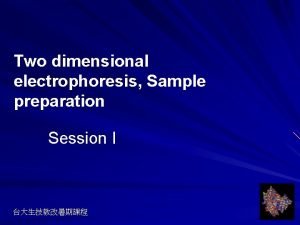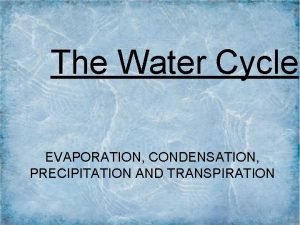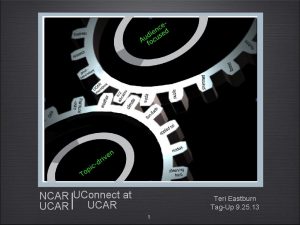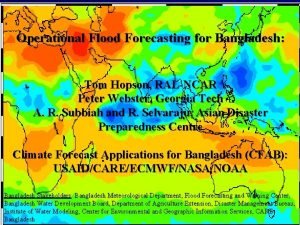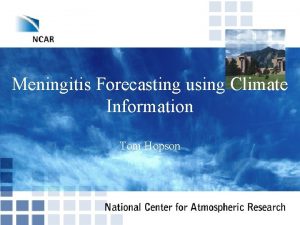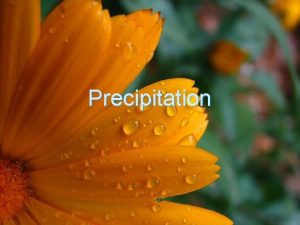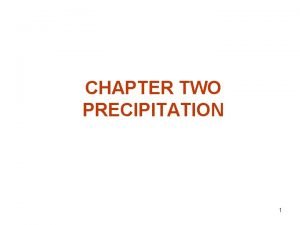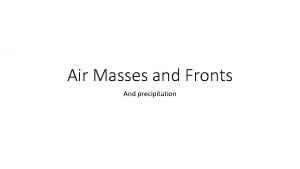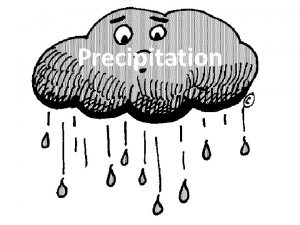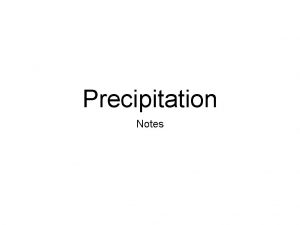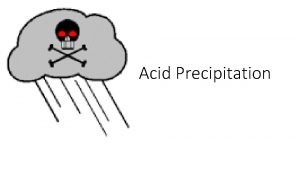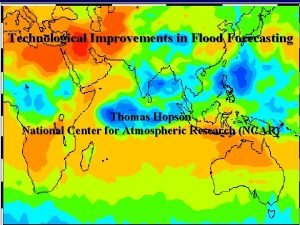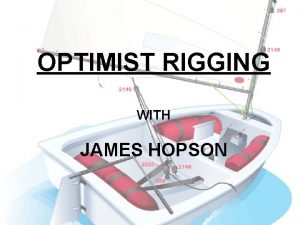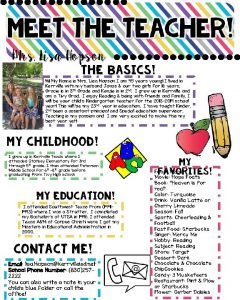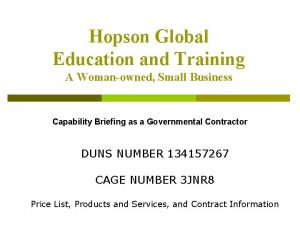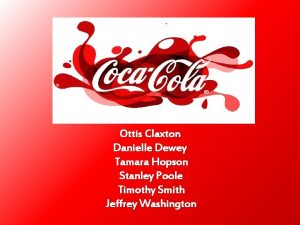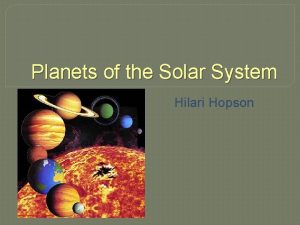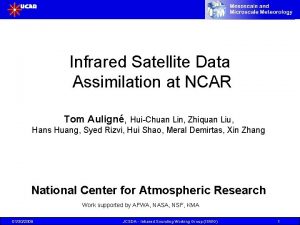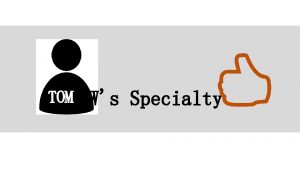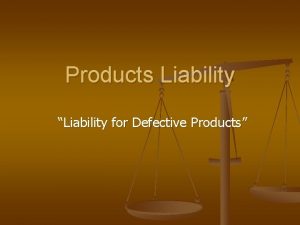Precipitation Products Statistical Techniques Tom Hopson NCAR Outline


![obs “bias” Forecast PDF “spread” or “dispersion” Flow rate [m 3/s] calibration Probability Forecast obs “bias” Forecast PDF “spread” or “dispersion” Flow rate [m 3/s] calibration Probability Forecast](https://slidetodoc.com/presentation_image/2eb4d785a8d8744c89952c21d4894887/image-3.jpg)



















- Slides: 22

Precipitation Products Statistical Techniques Tom Hopson, NCAR

Outline I. • “Quantile-to-Quantile Mapping” (Q 2 Q) bias correction technique • “Quantile Regression” (QR) corrections Multi-model ensemble generation • • “Schaake Shuffle” for flood prediction applications Preserving spatial covariances Preserving temporal autocovariances II. III.
![obs bias Forecast PDF spread or dispersion Flow rate m 3s calibration Probability Forecast obs “bias” Forecast PDF “spread” or “dispersion” Flow rate [m 3/s] calibration Probability Forecast](https://slidetodoc.com/presentation_image/2eb4d785a8d8744c89952c21d4894887/image-3.jpg)
obs “bias” Forecast PDF “spread” or “dispersion” Flow rate [m 3/s] calibration Probability Forecast “calibration” or “post-processing” obs Forecast PDF Flow rate [m 3/s] Post-processing has corrected: • the “on average” bias • as well as under-representation of the 2 nd moment of the empirical forecast PDF (i. e. corrected its “dispersion” or “spread”) Our approaches: • “quantile-to-quantile mapping” and under-utilized “quantile regression” approach • probability distribution function “means what it says” • daily variation in the ensemble dispersion directly relate to changes in forecast skill => informative ensemble skill-spread relationship

ECMWF 51 -member Ensemble Precipitation Forecasts 5 Day Lead-time Forecasts => Lots of variability 2004 Brahmaputra Catchmentaveraged Forecasts -black line satellite observations -colored lines ensemble forecasts -Basic structure of catchment rainfall similar for both forecasts and observations -But large relative over-bias in forecasts

Specific Necessity of Post-Processing Weather Forecasts for Hydrologic Forecasting Applications Hydrologic forecast model calibration can often implicitly remove biases in input weather variables (i. e. precipitation) However, if you use one product (i. e. satellite rainfall) to calibrate your hydrologic model, but use *more* than one product (i. e. satellite rainfall and numerical weather prediction rainfall) or weather forecasts at different lead-times (with different biases for each lead-time) to generate hydrologic forecasts, then biases *between* each product or forecast lead-time must be removed This is because hydrologic model calibration cannot (implicitly) remove all biases of all input weather products simultaneously

Forecast Bias Adjustment -done independently for each forecast grid (bias-correct the whole PDF, not just the median) Precipitation Pmax Model Climatology CDF Pmax “Observed” Climatology CDF Pfcst Padj 25 th 50 th 75 th 100 th 25 th Quantile Precipitation 75 th 100 th Quantile In practical terms … ranked forecasts 0 50 th ranked observations 1 m 0 Precipitation 1 m

Bias-corrected Precipitation Forecasts Original Forecast Brahmaputra Corrected Forecasts Corrected Forecast => Now observed precipitation within the “ensemble bundle”

Outline I. • “Quantile-to-Quantile Mapping” (Q 2 Q) bias correction technique • “Quantile Regression” (QR) corrections Multi-model ensemble generation • • “Schaake Shuffle” for flood prediction applications Preserving spatial covariances Preserving temporal autocovariances II. III.

Quantile Regression (QR) Our application Combining rainfall forecasts from 5 centers: CMA, CMC, CPTECH, ECMWF, NCEP conditioned on: 1) Ensemble mean of each center 2) Ranked forecast ensemble NCAR

PDFs: raw vs. calibrated Blue is “raw” ensemble Black is calibrated ensemble Red is the observed value Notice: significant change in both “bias” and dispersion of final PDF obs (also notice PDF asymmetries) NCAR

Outline I. • “Quantile-to-Quantile Mapping” (Q 2 Q) bias correction technique • “Quantile Regression” (QR) corrections Multi-model ensemble generation • • “Schaake Shuffle” for flood prediction applications Preserving spatial covariances Preserving temporal autocovariances II. III.

A Cautionary Warning about using Probabilistic Precipitation Forecasts in Hydrologic Modeling (Importance of Maintaining Spatial and Temporal Covariances for Hydrologic Forecasting => one option: “Schaake Shuffle”) River catchtment A ensemble 1 ensemble 2 ensemble 3 Scenario for average QA? Scenario for largest possible QA? No. sub. C sub. B QC QB QA QA same For all 3 possible ensembles Scenario for smallest possible QA? No.

Early May 2011, floods in southwestern Africa -- examine ens forecasts … NCEP GEFS 5 day precip

Outline • Overview of stations • Regenerating time-series autocorrelation • “Schaake Shuffle” • Results for select stations • Difference histograms • Autocorrelation • Error histograms • Summary 14

Re-generating Temporal Autocorrelation of Ensembles Sampled from Analog PDF’s using Historical Observational Sequences Slide from Demargne, Brown, Adams, Wood

Re-generating Temporal Autocorrelation of Ensembles Sampled from Analog PDF’s using Historical Observational Sequences (cont) Slide from Demargne, Brown, Adams, Wood

“I have a very strong feeling that science exists to serve human welfare. It’s wonderful to have the opportunity given us by society to do basic research, but in return, we have a very important moral responsibility to apply that research to benefiting humanity. ” Dr. Walter Orr Roberts (NCAR founder)

Summary NCAR


NCAR

NCAR

 Co precipitation and post precipitation
Co precipitation and post precipitation Co precipitation and post precipitation
Co precipitation and post precipitation Ncl ncar
Ncl ncar Clara deser ncar
Clara deser ncar Rebecca haacker
Rebecca haacker Peter sullivan ncar
Peter sullivan ncar Adams hayes and hopson 7 stage model
Adams hayes and hopson 7 stage model Adams hayes and hopson 7 stage model
Adams hayes and hopson 7 stage model Tomtom go 910 update
Tomtom go 910 update What does tom symbolize in the devil and tom walker
What does tom symbolize in the devil and tom walker Statistical techniques in robotics
Statistical techniques in robotics Weather forecasting techniques
Weather forecasting techniques Statistical techniques in robotics
Statistical techniques in robotics Functional and innovative products
Functional and innovative products Pepsi 4ps marketing mix
Pepsi 4ps marketing mix Chrissie the story of tom brennan
Chrissie the story of tom brennan Quote sandwich paragraph example
Quote sandwich paragraph example Sterile products and aseptic techniques
Sterile products and aseptic techniques Sterile products and aseptic techniques
Sterile products and aseptic techniques Sterile products and aseptic techniques
Sterile products and aseptic techniques Fonctions techniques
Fonctions techniques Ammonium sulfate precipitation
Ammonium sulfate precipitation Transpiration
Transpiration


